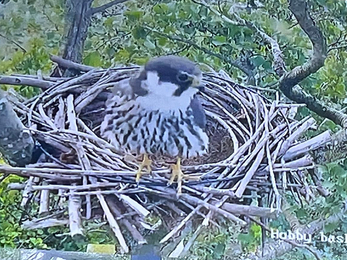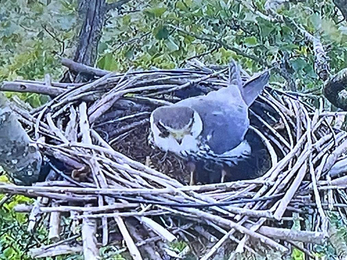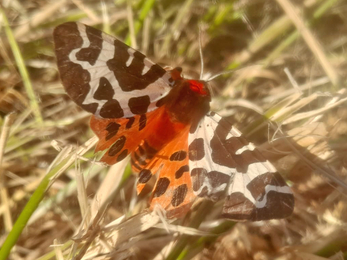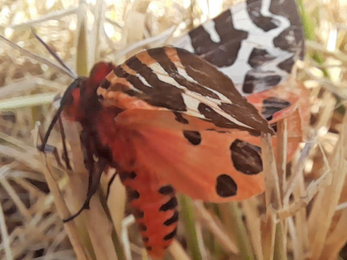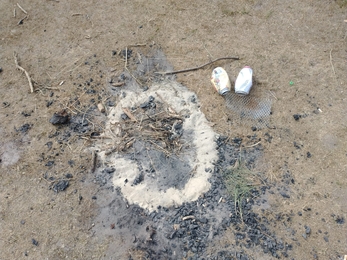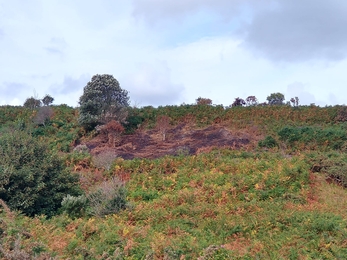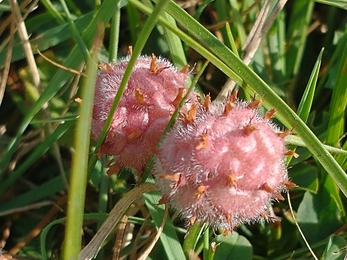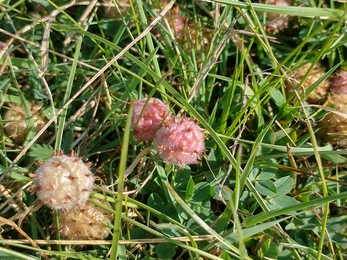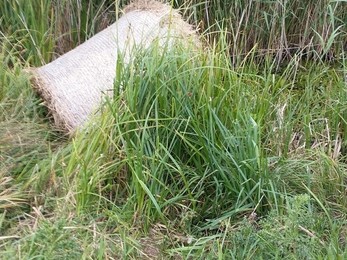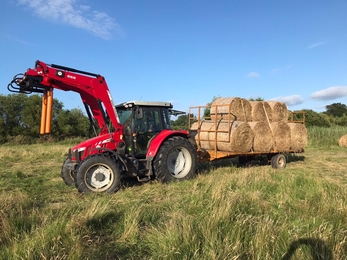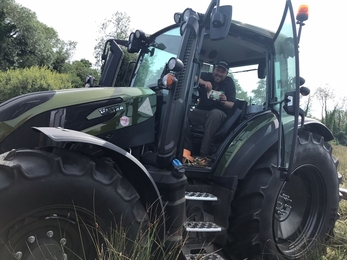Weekly wild news from our reserves - 29 July 2022
Strawberry clover at Hen Reedbeds - Jamie Smith
Catering Manager Claire was thrilled to spot this hobby on the artificial nest at Carlton Marshes this week. Hobbies usually repurpose old crow nests, so we introduced this nest structure to encourage them to breed at Carlton in a nest we can monitor remotely using the attached camera. We think this male bird might be checking out the location for next year's brood, so fingers crossed!
Scratching wasp
Site Manager Will spotted this wasp scratching with its mandibles to collect wood fibre at Lackford Lakes. Wasps use saliva to turn wood fibre into pulp to create their delicate papery nests. *sound on*
Garden tiger
Warden Joe spotted this striking garden tiger moth at Trimley Marshes. This species is well-protected against predators: the hairs on the ‘woolly bear’ caterpillars are irritating; the bright colours on adult moths warn that it is unpalatable; and they can rub their wings together to create a rasping noise.
Fire strikes again
The North East Reserve Team have been plagued by fire damage in recent weeks, partly due to the hot, dry weather but also due to irresponsible behaviour with barbecues, cigarettes and fires.
Warden Lewis said: "Our fire service is under huge pressure and it doesn't help when people use barbecues irresponsibly at high risk sites such as Gunton Warren. This fire took out several heather plots which have been nurtured by our volunteers for a number of years to suppress bracken, tree saplings and gorse for the invertebrate rich heathland habitat. Adders have also been sighted near to this location earlier this year."
Steve Aylward, our Head of Property and Projects, said: "There are dozens and dozens of different species in any typical grassland or heathland habitat, and many of them will not be mobile enough to get out of the way of a fast-moving grassland fire. Reptiles are particularly vulnerable because their instinct in danger is usually to take cover, but of course, if there's an approaching fire, they are extremely vulnerable."
Wasp spiders
Lound Lakes Warden Andy spotted his first wasp spiders of the year on the reserve this week. The female wasp spider is a great mimic - looking just like a common wasp keeps it safe from predators, even though it is not dangerous itself - this is known as Batesian mimicry. It builds large orb webs in grassland and heathland and attaches its silk egg-sacs to the grasses. The web has a wide, white zig-zag strip running down the middle, known as a 'stabilimentum', the function of which is unclear.
Mating is a dangerous game for males; they wait at the edge of the web until the female has moulted into a mature form, then take advantage of her jaws being soft and rush in to mate. However, many males still get eaten during this time. The female wasp spider has distinctive yellow, black and white stripes, just like a common wasp. Its legs are also stripy. The male is smaller and pale brown.
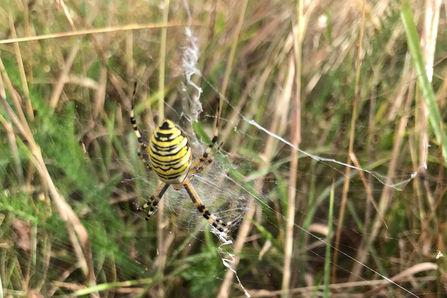
Wasp spider at Lound Lakes - Andy Hickinbotham
Mummified froglet
Broads Warden Lewis found this rather eery mummified froglet whilst he was repairing a fence this week. He said: "I think a bird ate the tasty bits and left the rest in the sun. Luckily there were plenty more hopping round the ditches nearby."
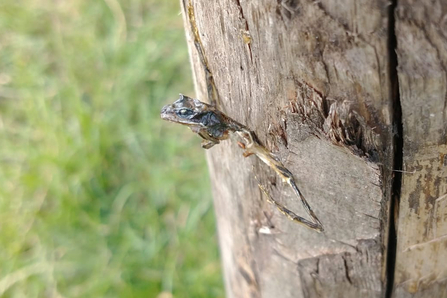
Mummified froglet - Lewis Yates
Strawberry clover
Strawberry clover is so called as the round fruit head resembles a light pink strawberry. It grows on natural grassland near to the coast, like these seen at Hen Reedbeds by Warden Jamie.
Butterflies galore
Assistant Warden Cormac got these lovely shots of butterflies at Bradfield Woods this week. We manage the ancient woodland and the rides within it to ensure species like butterflies can thrive.
Meadowsweet
Orchid season is over now at Newbourne Springs, but now this gorgeous meadowsweet is growing on the marsh instead. A sweet and slightly medicinal smelling flower of damp meadows, look out for frothy clusters of cream flowers on tall stems.
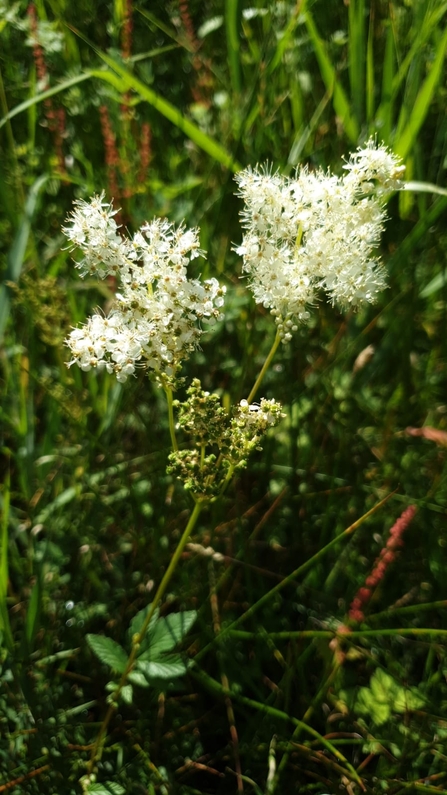
Meadowsweet – Rachel Norman
Hay away
The Oulton heifers didn’t seem too impressed with their homemade supplementary hay, or perhaps they prefer it damp, as they pushed it into the dyke!
Ride and boardwalk maintenance
A big thank you to our volunteers at Bradfield Woods and Lound Lakes for their excellent work repairing the rides and clearing boardwalks this week.
Topping for winter arrivals
It’s marsh topping season again which will help provide optimum grass levels for our soon to be arriving winter birds at Carlton Marshes.
Tractor driver takes the biscuit
The beaming smile when you give a warden a biscuit that matches his tractor!


